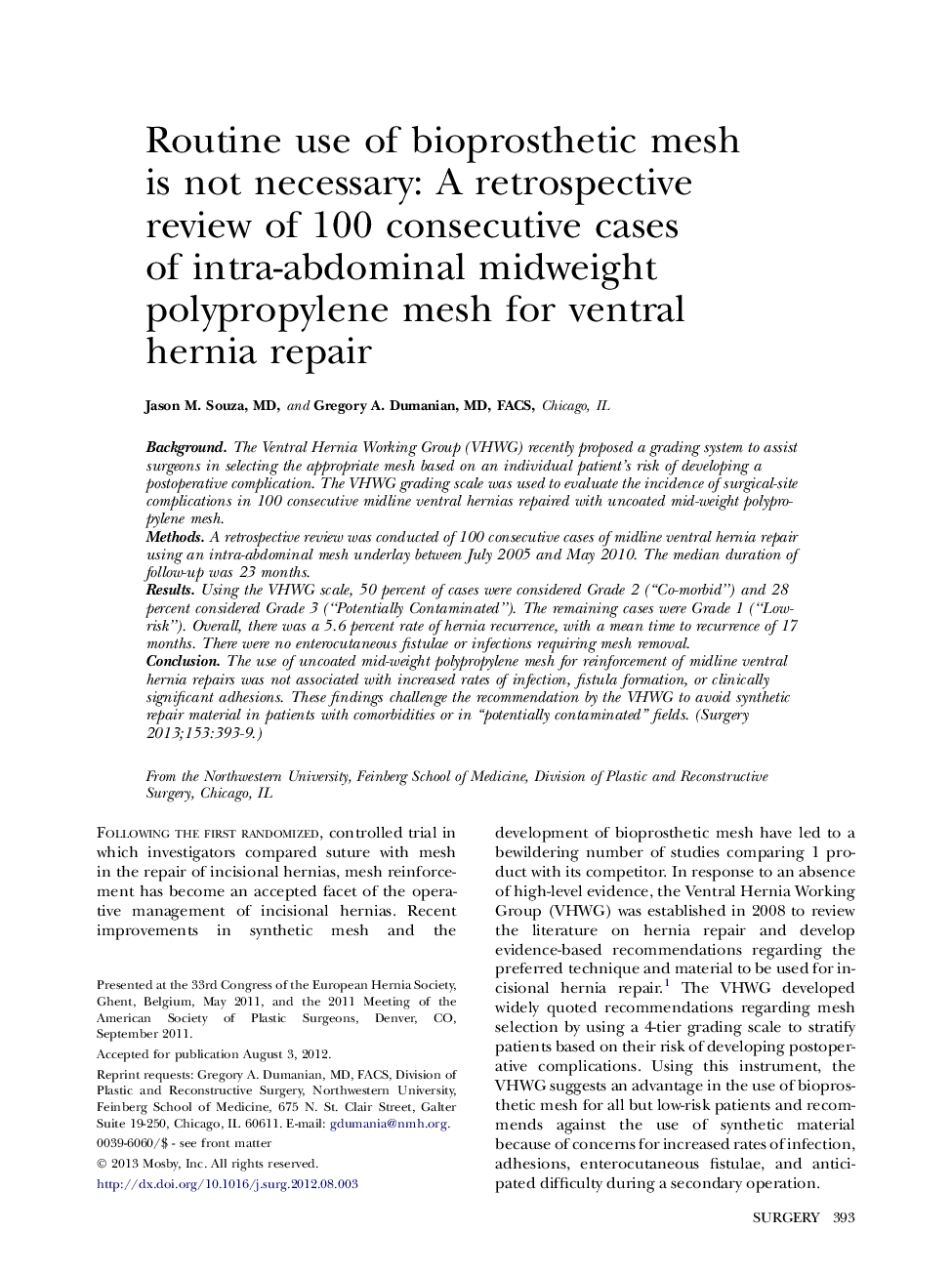| Article ID | Journal | Published Year | Pages | File Type |
|---|---|---|---|---|
| 4307925 | Surgery | 2013 | 7 Pages |
BackgroundThe Ventral Hernia Working Group (VHWG) recently proposed a grading system to assist surgeons in selecting the appropriate mesh based on an individual patient's risk of developing a postoperative complication. The VHWG grading scale was used to evaluate the incidence of surgical-site complications in 100 consecutive midline ventral hernias repaired with uncoated mid-weight polypropylene mesh.MethodsA retrospective review was conducted of 100 consecutive cases of midline ventral hernia repair using an intra-abdominal mesh underlay between July 2005 and May 2010. The median duration of follow-up was 23 months.ResultsUsing the VHWG scale, 50 percent of cases were considered Grade 2 (“Co-morbid”) and 28 percent considered Grade 3 (“Potentially Contaminated”). The remaining cases were Grade 1 (“Low-risk”). Overall, there was a 5.6 percent rate of hernia recurrence, with a mean time to recurrence of 17 months. There were no enterocutaneous fistulae or infections requiring mesh removal.ConclusionThe use of uncoated mid-weight polypropylene mesh for reinforcement of midline ventral hernia repairs was not associated with increased rates of infection, fistula formation, or clinically significant adhesions. These findings challenge the recommendation by the VHWG to avoid synthetic repair material in patients with comorbidities or in “potentially contaminated” fields.
